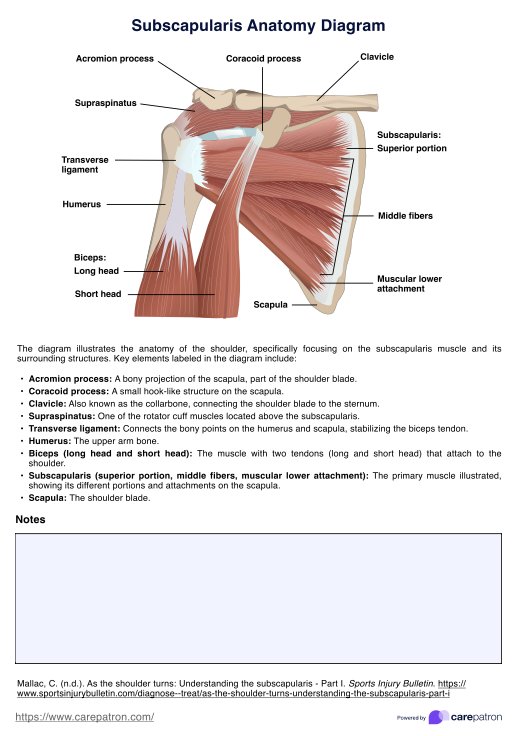The main action of subscapularis is internal rotation of the humerus. It also contributes to arm adduction and anterior stability of the glenohumeral joint.

Subscapularis Anatomy Diagram
What is the subscapularis muscle? How does it function as part of the rotator cuff muscles? Download our free anatomy diagram to gain a detailed understanding of this crucial muscle.
Use Template
Subscapularis Anatomy Diagram Template
Commonly asked questions
Special physical exam tests like the lift-off test, bear hug test, and belly press test can detect subscapularis tears. MRI provides the definitive imaging diagnosis.
The subscapular artery, a branch of the axillary artery, is the main blood supply to the subscapularis muscle.
EHR and practice management software
Get started for free
*No credit card required
Free
$0/usd
Unlimited clients
Telehealth
1GB of storage
Client portal text
Automated billing and online payments











